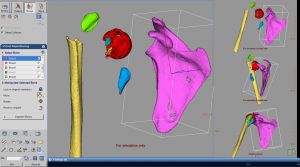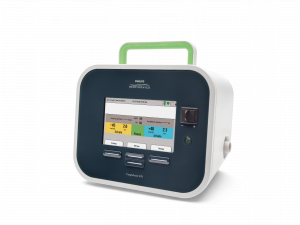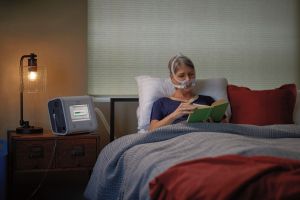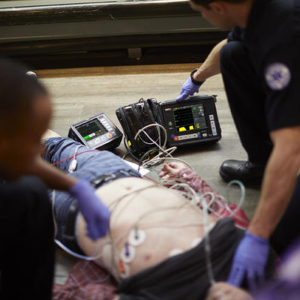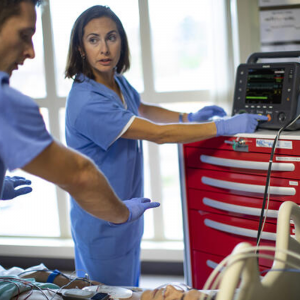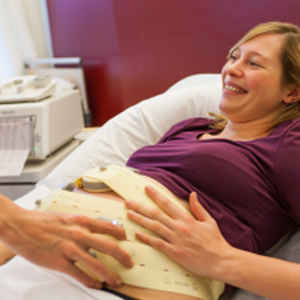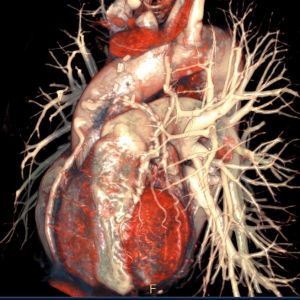Webinar
- WebinarCT Lunch & Learn Webinar 4: CT Trauma with Advanced VisualizationRef # : V01_CT_WEB_004
Date: Tuesday, December 19th, 1230-1330 SGT
Lunch & Learn Webinar: CT Trauma with Advanced Visualization
Sub-Topic: Spectral Viewer, Trauma CT, MSK
Target audience: Radiologists, Radiographers, Healthcare Professionals
Learn MoreFreeAdd to Wish ListReg. Closed - WebinarPhilips CoughAssist E70 Clinical Prescriber TrainingRef # : O58_SRC_WEB_003
Philips will be running a webinar for Clinicians and Prescribers on the use of the Philips CoughAssist E70. This session is intended to provide a comprehensive overview for new clinical CoughAssist E70 users, or for current clinical users looking to update or refresh their knowledge. It is not suitable for patients or caregivers.
Should you experience any issues connecting to the training session, please contact srcanz.marketing@philips.com.
This CoughAssist device has been discontinued globally, on and from 12 September, 2023. We will be unable to support new purchases of this device. Philips will continue to support existing devices and provide repair parts and accessories as long as parts and accessories are available, but, in any event, no longer than through the end of service 1 October, 2028.
Course date: September 7, 2023
Time: 11:00 am - 1:00 pm Australian Eastern Standard Time (AEST)
Learn MoreFreeAdd to Wish ListReg. Closed - WebinarPhilips CoughAssist E70 Patient and Caregiver TrainingRef # : O58_SRC_WEB_004
Philips will be running a webinar for Patients and Caregivers on the use of the Philips CoughAssist E70. This session is intended for new users or current users looking to refresh their knowledge.
Should you experience any issues connecting to the training session, please contact srcanz.marketing@philips.com.
This CoughAssist device has been discontinued globally, on and from 12 September, 2023. We will be unable to support new purchases of this device. Philips will continue to support existing devices and provide repair parts and accessories as long as parts and accessories are available, but, in any event, no longer than through the end of service 1 October, 2028.
Course date: August 24, 2023
Time: 11:00 am - 12:00 pm Australian Eastern Standard Time (AEST)
Learn MoreFreeAdd to Wish ListReg. Closed - WebinarPhilips Trilogy Evo Clinical Prescriber Ventilator TrainingRef # : O58_SRC_WEB_002-1FreeAdd to Wish ListReg. Closed
- WebinarPhilips Trilogy Evo Patient and Caregiver Ventilator TrainingRef # : O58_SRC_WEB_001FreeAdd to Wish ListReg. Closed
- WebinarManaging Traumatic Cardiac ArrestRef # : T05_HPM_RWEB_001
Traumatic Cardiac Arrest is the most urgent, time-critical, life-threatening trauma situation Emergency Medical Service personnel can face. The understanding and management of this condition has progressed significantly in the last few years. In this exciting, topical webinar, Prof Richard Lyon will present the epidemiology and pathology of TCA; describe the ‘HOT’ algorithm of pre-hospital interventions; how to maximize chance of survival and address some key issues such as whether chest compressions should be performed in TCA.
Delivery method: This is an online, self-paced course.
Duration: This course requires approximately 77 minutes to complete.
Learn MoreFree - WebinarCPR research updates and AHA guidelines previewRef # : T05_HPM_RWEB_002
Join our webinar for an exciting journey of clinical education to learn about the new developments in improving CPR and a comprehensive review of the new evidence and research around CPR today. In our webinar, you will also learn about new evidence that may be incorporated into the next refresh of the 2020 AHA guidelines.
CPR remains a widely researched topic in resuscitation studies and in recent years, there had been introduction of new technology, techniques and solutions to improve the efficacy of CPR. In this webinar, Dr Abella will provide his unabridged clinical opinion on these new developments in CPR and provide his assessment of the new evidence and the relevance to the upcoming AHA guidelines publication.
The webinar will cover the following topics:
- Review of the fundamentals of cardiopulmonary resuscitation
- Review of the latest technology and techniques and the clinical efficacy in improving cardiopulmonary resuscitation
- Overview recent scientific research in the current pandemic in that are clinically significant to cardiopulmonary resuscitation
Delivery method: This is an online, self-paced course.
Duration: This course requires approximately 60 minutes to complete.
Learn MoreFree - WebinarBeltless fetal monitoring solutionRef # : T05_HPM_RWEB_003
Mobility during childbirth for all women: a beltless fetal monitoring solution
Join us for the webinar where our guest speakers will present finds from a survey of over 200 Australian and New Zealand maternity units, regarding their use of continuous fetal monitoring devices that enable freedom of movement for women.
This webinar will encourage participants to reflect on the way they interact with technology in modern maternity care and to consider whether their own clinical practice optimize women's innate physiological processes.
Participants will hear about the findings of a clinical feasibility study of new beltless and wireless fetal monitoring used by over 100 women in labour at the Royal Hospital for Women, Randwick, NSW. The outcomes associated with use of the beltless monitoring device and the views and experiences of women, midwives and obstetricians who used the device will be described.
Delivery method: This is an online, self-paced course.
Duration: This course requires approximately 82 minutes to complete.
Learn MoreFree - WebinarCableless and beltless solutions are the way of the futureRef # : T05_HPM_RWEB_004
New directions in fetal monitoring: cableless and beltless solutions are the way of the future
This webinar, presented by researchers from the Centre for Midwifery, Child and Family Health at the University of Technology Sydney will explore best practice in labour and birth care with regard to fetal moniotring technologies. Presenters will discuss the importance of optimising physiological processes and providing respectful care in pregnancy and birth for each and every woman. Clinical strategies for enabling freedom of movement and positioning for women in labour and birth will be workshopped, and the benefits of using cableless CTG will be discussed.
You will also learn about future directions in fetal monitoring technology, including the results of an Australian trial investigating a new beltless fetal monitoring device. Throughout the webinar, participants will be invited to reflect on the way in which they use fetal monitoring technology and consider whether they can improve women's experiences.
Key learning points:
- The anatomical and physiological reasons why freedom of movement in labour is crucial
- Cinical tips and tricks for promoting active labour
- Upright birthing positions and why they work
- The benefits of using cableless CTG
- Introduction to new beltless fetal monitoring
Delivery method: This is an online, self-paced course.
Duration: This course requires approximately 77 minutes to complete.
Learn MoreFree - WebinarEmpowerment through Automated Early Warning ScoringRef # : T05_HPM_RWEB_005
Join us for an engagingdiscussion with our guest speakers on how automated Early Warning Scoring (EWS) aids in identifying subtle signs of deterioration in a general floor patient's condition at the point of care, hours before a potential adverse event. Caregivers and Rapid Response Teams can respond earlier - in time to make a difference.
Topic 1: How EWS combined with technology improve patient safety
Synopsis:
Vital signs monitoring is a routine nursing process that is time consuming but very important in any patient care. Patient safety is a priority in ensuring quality care and poor clinical monitoring is associated with preventable events. Automated Early Warning Score has tackled these 2 clinical issues by digitalizing the work process and automating the clinical tool Early Warning Score. We will share our experience in Bagan Specialist Centre in adopting this and its improvement in our safety indicators.
Key learning points:
- By digitalising vital sign mornitoring, we simplify the high-value work in nursing care
- By automating Early Warning Score, we improve the effectiveness of the clinical tool Early Warning Score
- In adopting Automated Early Warning Score, it is important to have it fully integrated with existing HIMS/EMR for successful implementation and outcome
- Start simple and keep enhancing it
- Automated Early Warning Score improve patient safety by reducing unplanned ICu admission by 44%, reduce hospital mortality by 50% and reduce ICU mortality by 30%
Topic 2: Early detection, Empowered care
Synopsis:
More patients care being admitted to the hospital with complex medical conditions. For an inexperienced nurse, it's not easy to make quick clinical decisions with regards to patient care, especially in a busy and fast paced environment. The Early Warning System is a customizable patient surveillance system, combining software, clinical decision support algorithms and mobile connectivity to help nurses identify effective interventions for the right patient at the earliest possbile time. It is an overall solution designed to aid nurses to accurately and quickly identify signs of deterioration, facilitating appropriate interventions to eliminate potential health events, thereby improving patient care, financial outcomes, clinical workflow and reducing patient's length of stay.
Key learning points:
- IntelliVue Guardian Solution (IGS) identifies significant deviations in a patient's vital signs
- The IGS EWS solution automates scoring of patient deterioration promptly as it is linked to the Philips Spot Check monitors and IntelliVue Cableless measurement
- EWS can be more reliable in identifying patient at risk than individual vital signs alone
- The system enales a tailored escalation plan suited to our hospital setting, allowing patients to receive appropriate management in timely fashion
- Respiratory measurements: IGS incorporates automated respiration rate into its EWS calculation. Respiration rate, which is not always captured correctly, is a critical factor in accurately predicting both sepsis and cardiac arrest
Delivery method: This is an online, self-paced course.
Duration: This course requires approximately 76 minutes to complete.
Learn MoreFree
